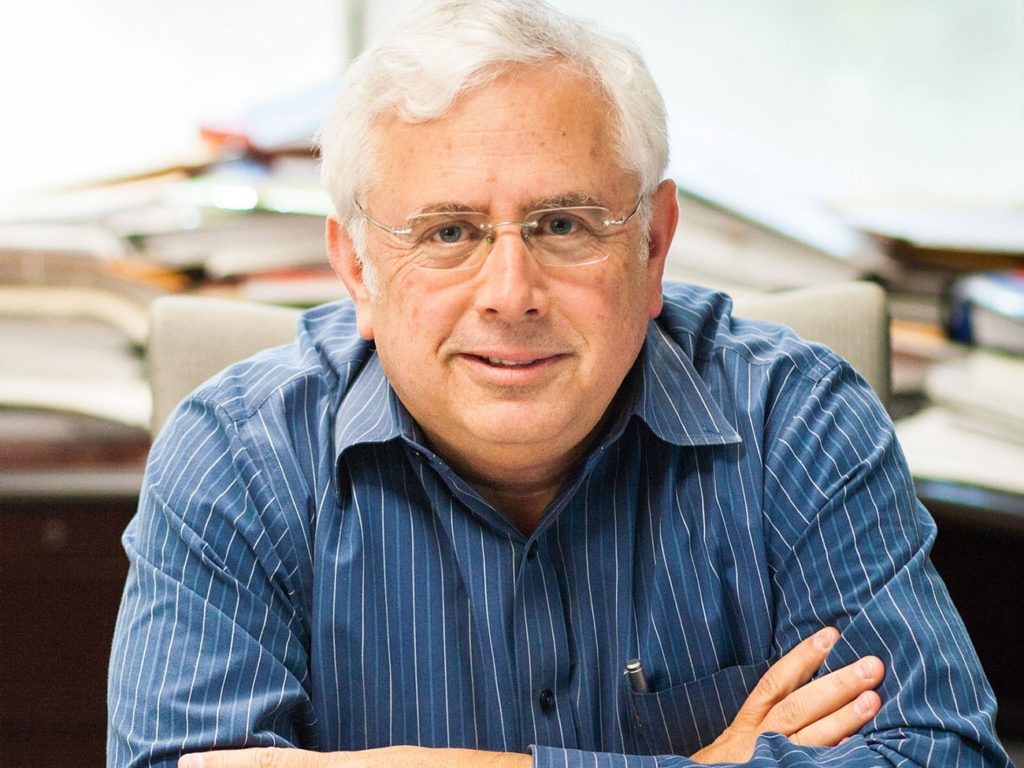One-two punch drug combination offers hope for pancreatic cancer therapy
Study provides rationale for an immediate clinical trial evaluating the two therapies
“The sad reality is that at present, pancreatic cancer therapy is lagging since there is no effective treatment for these tumors,” says Ze’ev Ronai, Ph.D., professor in Sanford Burnham Prebys’ Tumor Initiation and Maintenance Program and senior author of the study. “Our study identifies a potential treatment combination that can immediately be tested against these aggressive tumors. We are already meeting with oncologists at Oregon Health & Science University to discuss how to advance this discovery into clinical evaluation.”
Pancreatic cancer is one of the deadliest cancers. It is often difficult to diagnose because symptoms—such as pain in the abdomen, yellow skin and eyes, and weight loss—don’t typically occur until the disease is advanced. Less than 10 percent of people with pancreatic cancer remain alive five years later. More than 56,000 Americans are expected to receive a pancreatic cancer diagnosis in 2019, according to the American Cancer Society.
In the study, the scientists used a drug called L-asparaginase to starve pancreatic tumors of a key nutrient, asparagine—an amino acid required for protein synthesis. Instead of dying, they found that the tumor turned on a stress response pathway that allowed the cancer cells to produce asparagine themselves. The scientists then treated mice with a second drug that blocked the stress response pathway and shrank the pancreatic tumor. L-asparaginase is FDA approved to treat certain leukemias; and the second drug, a MEK inhibitor, is approved for the treatment of solid tumors, including melanoma, a type of skin cancer.
“This research lays the basis for the inhibition of pancreatic tumor growth by a combined synergistic attack based on asparagine restriction and MAPK signaling inhibition,” says Eytan Ruppin, M.D., Ph.D., a study author and chief of the Cancer Data Science Library at the National Cancer Institute, part of the National Institutes of Health (NIH). “Our lab was able to further support these findings through a computational analysis of patient data.”
Adds Rosalie C. Sears, Ph.D., a professor at Oregon Health & Science University, “It’s clear we’re not going to find a single magic bullet that cures cancer but will instead need several drugs that target multiple vulnerabilities. This study identifies a promising dual treatment for pancreatic cancer—one of the deadliest cancers—and I look forward to seeing these drugs tested in patients.”
In the same study, the scientists showed that the two treatments also shrank melanoma tumors in mice. Due to the large unmet clinical need in pancreatic cancer, the scientists have decided to focus on this cancer first.
The first author of the study is Gaurav Pathria, Ph.D., a senior postdoctoral associate in the Ronai lab. Additional study authors include Joo Sang Lee, Ph.D., of the NIH and Sungkyunkwan University of Medicine and Erez Hasnis, M.D., Ph.D., of Sanford Burnham Prebys, who contributed equally to the study; Kristofferson Tandoc of McGill University; David A. Scott, Ph.D., Sachin Verma, Ph.D., Yongmei Feng, Ph.D., of Sanford Burnham Prebys; Lionel Larue, Ph.D., of Institut Curie, University Paris-Sud and Equipe Labellisée Ligue Contre le Cancer; Avinash D. Sahu, Ph.D., of Harvard; Ivan Topisirovic, M.D., Ph.D., of Sungkyunkwan University of Medicine.
The study’s DOI is 10.1038/s41556-019-0415-1.
Research reported in this press release was supported by the NIH (P30CA030199, R35CA197465, P01CA128814) and the Hevery Foundation.
###
About Sanford Burnham Prebys Medical Research Institute
Sanford Burnham Prebys is a preeminent, independent biomedical research institute dedicated to understanding human biology and disease and advancing scientific discoveries to profoundly impact human health. For more than 40 years, our research has produced breakthroughs in cancer, neuroscience, immunology and children’s diseases, and is anchored by our NCI-designated Cancer Center and advanced drug discovery capabilities. For more information, visit us at SBPdiscovery.org or on Facebook at facebook.com/SBPdiscovery and on Twitter @SBPdiscovery.
Original post https://alertarticles.info


